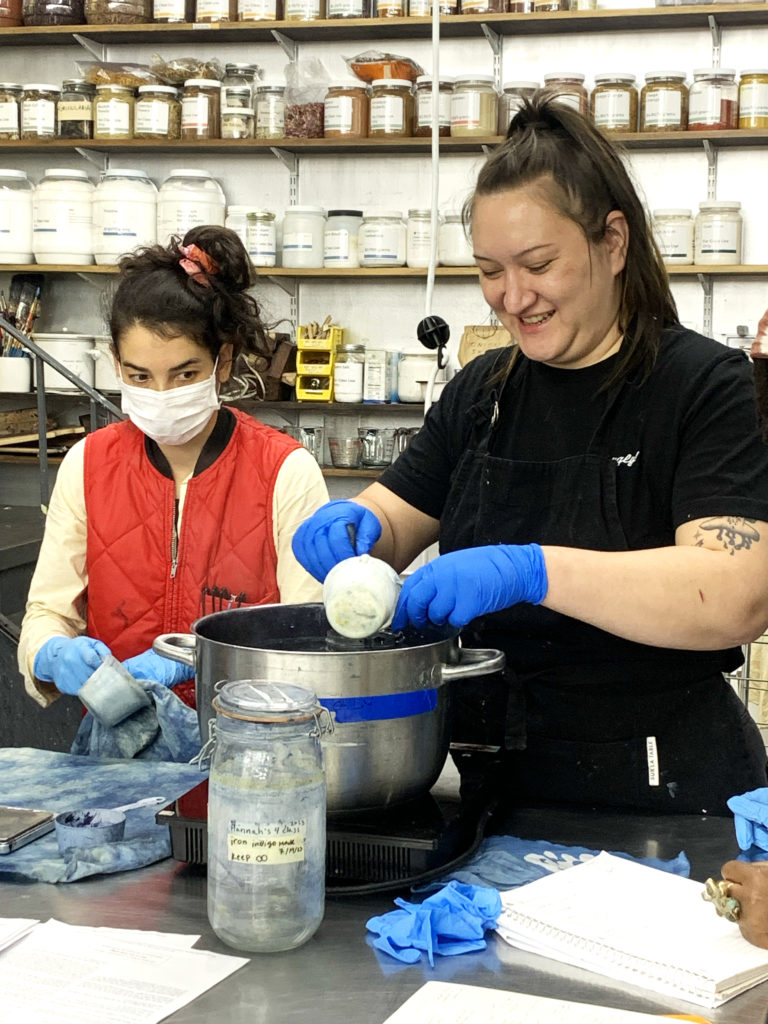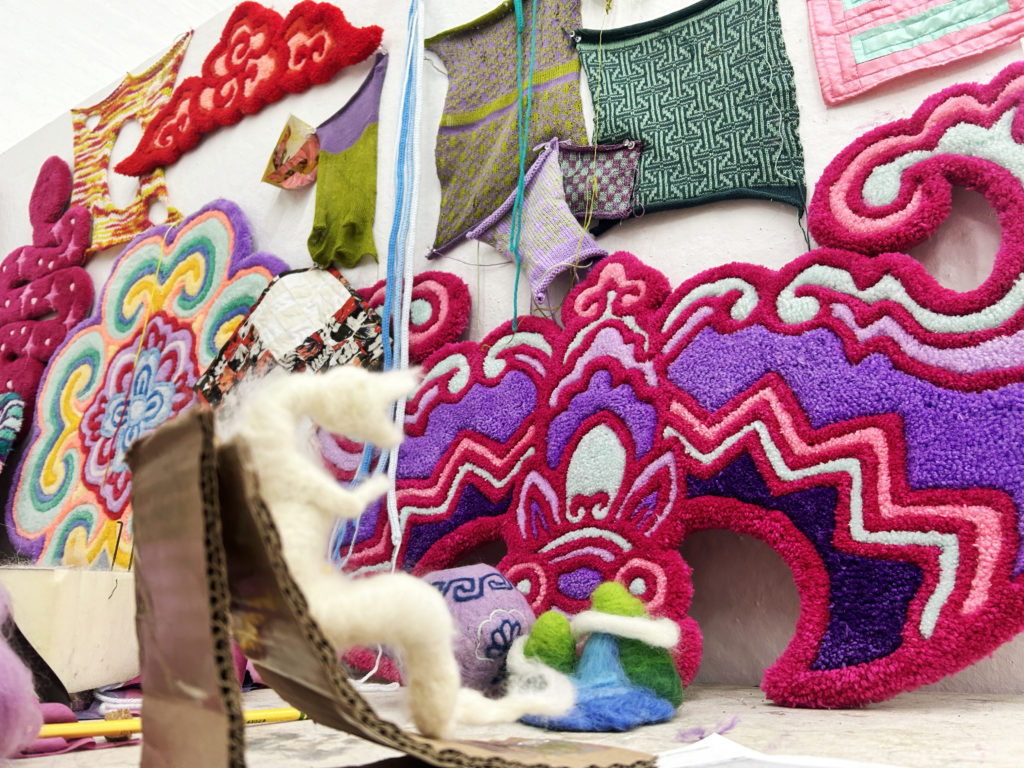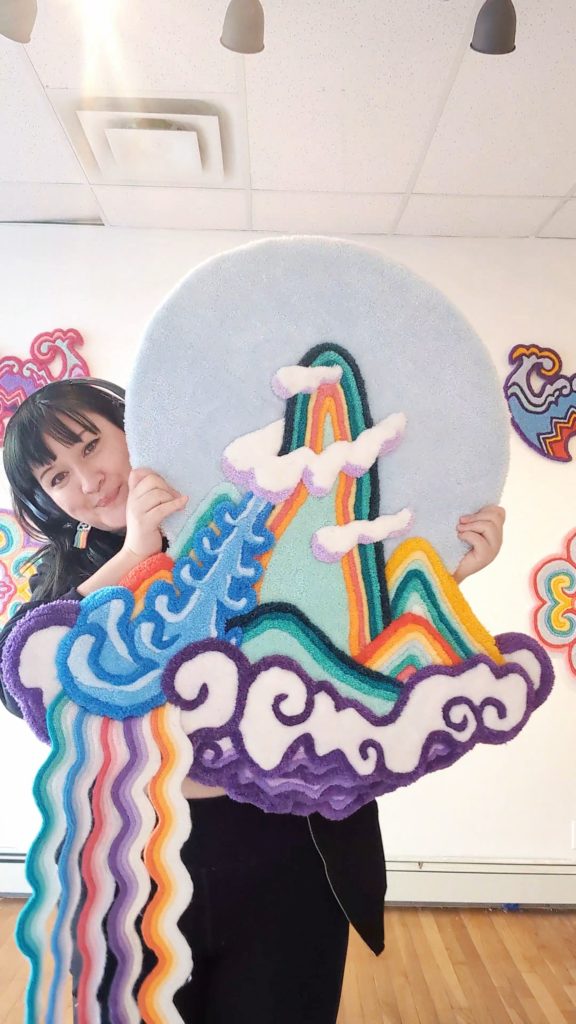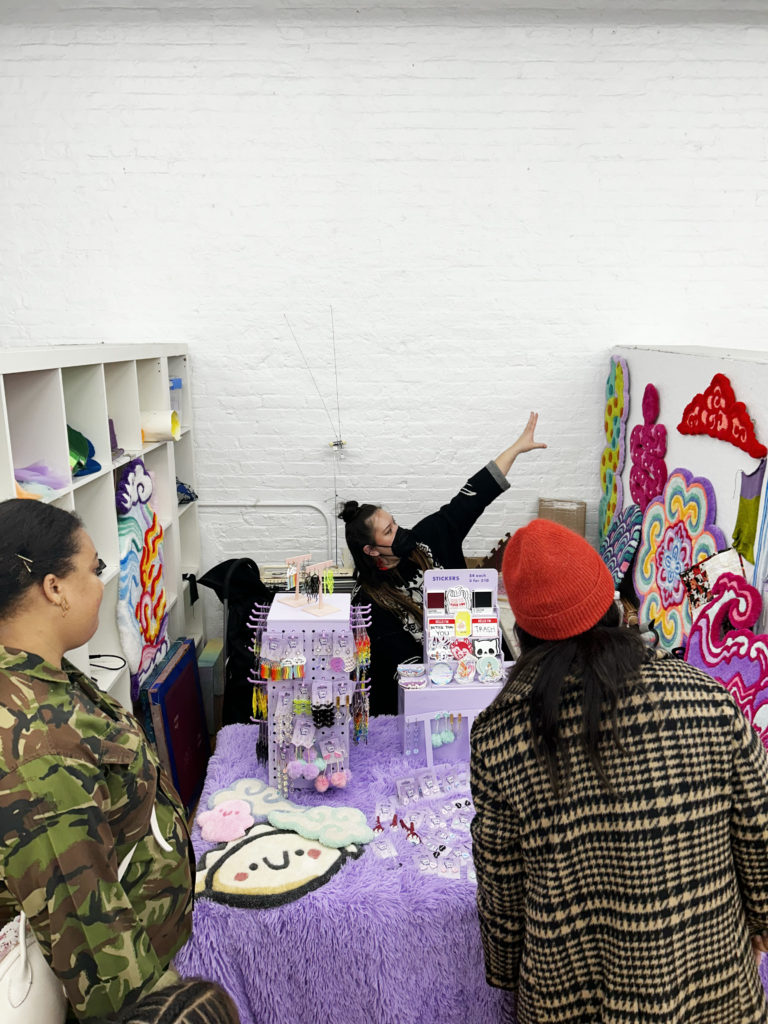AIR 15 Feature: Shawna Tang
Sahana Srinivasan, our Artist Programs intern, got together with current AIR 15 resident Shawna Tang: Shawna Tang is a fiber artist and sculptor based in Queens, NY originally from San Jose, California. Shawna also owns a jewelry and home decor brand, Cookie Smut, with designs that are colorful, kitschy, and yes sometimes smutty.
"My past work is a lot of symbolism, particularly imperial or powerful symbols, and applying a more everyday color to a piece so attached to power. So, there’s a lot of subversion with power. I think now it’s communicating the second layer that I am breaking down the symbols and their meanings for myself as well."
Sahana: Let’s start! What are you up to now?
Shawna: I tried to embody play when we were in the Play period, in terms of looking at technique and materiality without a concrete end result. But now I’m looking into a more focused piece, so I’m thinking a lot about scenes. Scenes in the sense that they tap into my Chinese heritage, whether that be the mountains that I would see in my childhood or the man made pieces of the culture. But I have an interest in putting together this composition as an unreliable narrator, so painting the past in a rosier light than it really was.
Sahana: I recall you were taking quite a few classes during the Play period: what are some techniques or materials that you’re trying to zone into now?

Shawna: I was trying to understand how to add detail through surface design, so whether that was in quilting or weaving, it was a consistent through-line. With those in mind though, now I’m trying to see how I can move my work in a 3-dimensional space and expand on that aspect of surface design that I just explored.
Sahana: Yeah, and considering the amount of practices you were introduced to in these past few months of residency, what kind of shifts have you seen in your approaches now?
Shawna: I feel like my growth was more personal, because I love learning in general, I love being in active learning environments. But I recognized that I needed to put certain approaches aside so as to not overwhelm myself in a time where I’m meant to explore. That is also the general ethos of Play: to let go of expectations and see what comes of the process as a whole.

Sahana: Now that we’re moving into research and it’s a bit more of an abstract space, what are your approaches and intentions towards it?
Shawna: I’ve kept a throughline of patterns that have been inspired by Chinese handicrafts, so my big question for myself is why am I continuously gravitating towards that. There’s personal research I want to do, and that includes looking through old family photos that were black and white images of them in Taiwan. So I want to look at more historical works to give the personal history more background. I love when people talk about their work and really dive into the themes that surround it, so that inspires me to reexamine my own approaches to the research side of things.
Sahana: You mentioned family history in particular, is there anything you want to zone in on as a focus for your imagery?
Shawna: I remember you mentioned this a while back, and also understanding what oral history in particular would look like in a non-formal space has taken some time. I remember certain conversations with my mother where I’m asking a lot about the past three generations of our family in Taiwan, so that does breach the space of oral history in its own way. Right now, my influence has been this glass class at UrbanGlass and the theme is narrative sculpture. I think getting those stories that I get from my family will give that human choice in my work.
Sahana: When you’re collecting these narratives, where do you find yourself standing in the process?
Shawna: I don’t find myself documenting the exact stories of my family, but rather, I want to capture the tone that exists there. I think I grew up hearing about this black-and-white perfect family archetype, but as I learn more about the family dynamics, it’s not as picture perfect. So I want to be able to capture the tones of both sides: the false archetype and the reality, and the drawings, the ideas I’m sketching out are starting to reflect that.
Sahana: You said you gravitate towards the space of an unreliable narrator, and I’m wondering if there are any specific mediums that really capture that space.
Shawna: For sure, I feel like needle felting would be a big part because it is sculpture-like, and it still has this additive quality towards it. I’m thinking about machine knitting or quilting for the surrounding environments, such as the land or the hills in these scenes.
Sahana: When you mention these landscapes, are you thinking of any sort of fantastical or mythological space?
Shawna: At the moment, the grounding environment has been the mythology surrounding the Kunlun Mountains. In the mythologies, it’s the veil between the human world and the world of deities. I think having something that’s a little tattered on the edges or it’s dissolving is influenced by the in-between space of this mythology.
Sahana: Did you grow up a lot with these myths or has it been a more recent discovery?
Shawna: Some of them, I did grow up with. And I learned them at Chinese School, everyday after school. We had reading assignments, which were these myths, and I didn’t really like them as a child because they had pretty bleak endings. There’s a story about the Moon Goddess, for example, who gets stuck up on the moon because she loved the wrong man. Or another visual from a story, where a woman cries so much out of grief that she starts crying blood. I find that the myths with animals have a more fable-like quality, and I gravitate towards that a lot more, compared to the stories with humans.

Sahana: Yeah, I think while looking at these tales in retrospect, there’s more nuance that we have to approach the way these stories are told. I guess with that in mind, have you thought about the way you would want to present your body of work, since it relies so much on worldbuilding.
Shawna: I’m imagining miniature dioramas, which I would say comes from my dad’s side. A world encased in a 12 x 12 x 12 area, with lots of different details, like the objects people have left behind. If the base is needle felted, I would love to have it in a rich color palette and then potentially have it all fade into white, so it looks like a world in the middle of the universe. I guess I’m feeling it from the outside in.
Sahana: You’ve mentioned that your color palette has been consistent throughout the new techniques you’ve explored and throughout any mediums. I’m curious how you’ve developed that particular relationship with color.
Shawna: My past work has been a lot of rug tufting, and I can’t mix colors with yarn, so that already made me zone in on a particular color palette. I would also love for all my pieces to look like they occupy the same world, so the colors are the most definitive part of that. From that, I’ve learnt that my lines or borders don’t have to be black, but they could be dark purple, so it’s all been little color theory choices I’ve picked up over the years. I’m also inspired by temples, and the coloration there.

Sahana: From there, what kind of dialogue would you say is going on between your past work and your present work?
Shawna: My past work is a lot of symbolism, particularly imperial or powerful symbols, and applying a more everyday color to a piece so attached to power. So, there’s a lot of subversion with power. I think now it’s communicating the second layer that I am breaking down the symbols and their meanings for myself as well. It’s all building blocks, I would say.
Sahana: Do you have any works, texts, or exhibitions that have influenced you in building these blocks right now?
Shawna: James Hsieh, I saw his exhibit and found out he was a former WIP Resident. But we have a lot in common, in terms of color palette, and he builds these worlds with fantastical creatures. So I saw his show in Manhattan at Art of Ave x Fuson, and he had a big soft sculpture of felt ants, and the frame itself was a soft sculpture of leaves. The world building is so specific and very transportative in his work. Beyond that, I would say my glass teacher’s work has that same different world kind of quality, and builds narrative in such a specific kind of manner.
Sahana: With the way you work in your process, do you see serialized quality to the way you look at the narratives?
Shawna: Honestly yes, and I want to look at making micro versions of the dioramas I mentioned earlier to build up that narrative process.
Sahana: I would say, to finish up, what are you working on now and what are you looking forward to in the coming months?
Shawna: I think building my own stepping stones, to take the visual research and the creation of individual pieces one step at a time and see what comes up in both spaces. I feel like this is my 8 year old T-ball team time, in terms of gathering everything together.